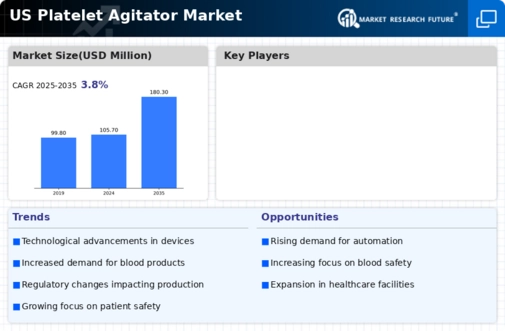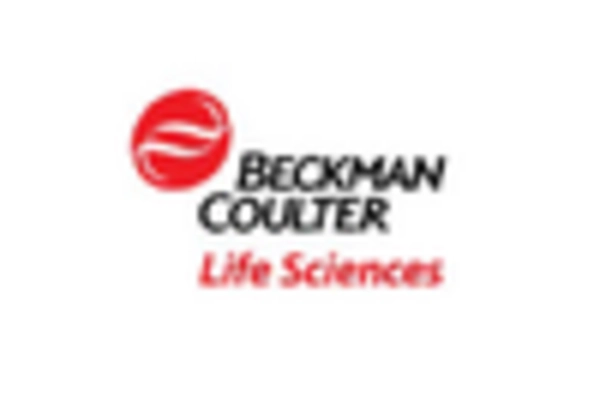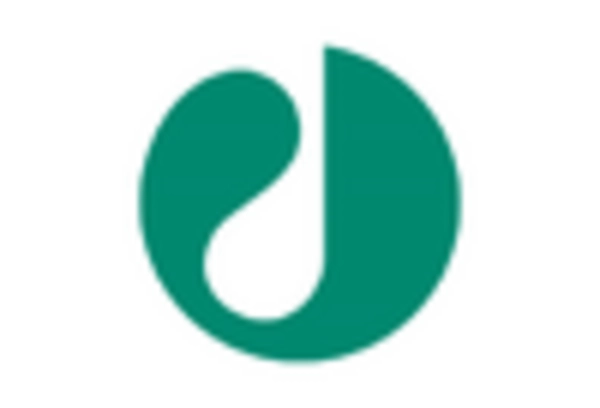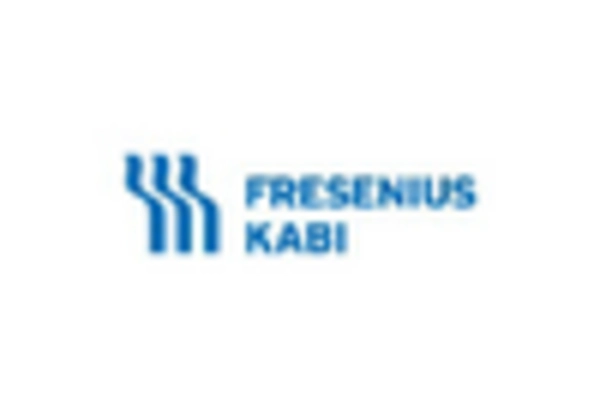Focus on Blood Safety and Quality
Emphasizing blood safety and quality is a critical driver for the platelet agitator market. Regulatory bodies and healthcare organizations are increasingly prioritizing the safety of blood products, leading to stringent guidelines and standards for their handling and storage. This focus on quality assurance compels healthcare facilities to invest in reliable platelet agitators that meet regulatory requirements. The platelet agitator market is thus influenced by the need for devices that not only maintain the integrity of platelet products but also comply with safety protocols. As the industry continues to evolve, the demand for high-quality agitation solutions is expected to rise, reflecting the commitment to patient safety and effective treatment outcomes.
Increasing Healthcare Expenditure
The rising healthcare expenditure in the US is a pivotal driver for the platelet agitator market. As healthcare budgets expand, hospitals and laboratories are more inclined to invest in advanced medical equipment, including platelet agitators. This trend is underscored by the fact that healthcare spending in the US is projected to reach approximately $4.3 trillion by 2025, representing a growth rate of about 5.4% annually. Such financial commitment enables healthcare facilities to enhance their operational efficiency and improve patient outcomes. Consequently, the platelet agitator market benefits from this increased investment, as facilities seek to optimize blood product management and ensure the highest standards of care. The focus on quality and efficiency in healthcare delivery propels the demand for sophisticated platelet agitation solutions.
Rising Incidence of Blood Disorders
The growing prevalence of blood disorders in the US is significantly influencing the platelet agitator market. Conditions such as hemophilia, thrombocytopenia, and other hematological disorders necessitate the use of platelet products, thereby increasing the demand for effective agitation solutions. According to recent estimates, around 1 in 1,000 individuals in the US are affected by hemophilia, highlighting a substantial patient population requiring specialized care. This rising incidence drives healthcare providers to seek advanced platelet agitators that ensure optimal platelet preservation and functionality. As the need for blood products escalates, the platelet agitator market is poised for growth, as it plays a crucial role in the management and treatment of these disorders.
Expansion of Blood Donation Programs
The expansion of blood donation programs across the US significantly impacts the platelet agitator market. As organizations and healthcare providers work to increase blood donations, the need for efficient processing and storage of donated blood products becomes paramount. Platelet agitators play a vital role in ensuring that platelets remain viable for transfusion, thereby supporting the growing demand for blood products. With initiatives aimed at encouraging donations, the platelet agitator market is likely to see increased adoption of advanced agitation technologies. This trend not only enhances the efficiency of blood banks but also contributes to improved patient care, as timely access to quality blood products becomes more achievable.
Technological Innovations in Medical Devices
Technological innovations in medical devices are reshaping the landscape of the platelet agitator market. The introduction of automated and smart platelet agitators, equipped with advanced monitoring systems and user-friendly interfaces, enhances operational efficiency and accuracy. These innovations not only streamline the agitation process but also ensure compliance with stringent quality standards. The market is witnessing a shift towards devices that offer real-time data analytics and connectivity features, allowing for better tracking and management of platelet products. As hospitals and laboratories increasingly adopt these cutting-edge technologies, the platelet agitator market is likely to experience substantial growth, driven by the demand for enhanced performance and reliability in blood product handling.

















Leave a Comment